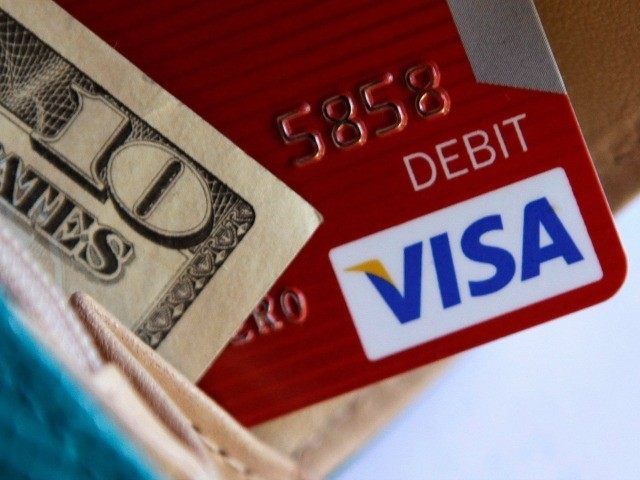There’s a disturbing sense of deja vu surrounding the Wall Street Journal’s report on a new subprime loan bubble inflating beneath our economy. We’ve been here before, haven’t we?
Loans to consumers with low credit scores have reached the highest level since the start of the financial crisis, driven by a boom in car lending and a new crop of companies extending credit.
Almost four of every 10 loans for autos, credit cards and personal borrowing in the U.S. went to subprime customers during the first 11 months of 2014, according to data compiled for The Wall Street Journal by credit-reporting firm Equifax.
That amounted to more than 50 million consumer loans and cards totaling more than $189 billion, the highest levels since 2007, when subprime loans represented 41% of consumer lending outside of home mortgages. Equifax defines subprime borrowers as those with a credit score below 640 on a scale that tops out at 850.
Lenders’ interest in customers who were the hardest hit by the financial crisis reflects both the relative health of the U.S. economy and firms’ desires to take more risks at a time when ultralow interest rates are depressing profits.
It also shows Americans are willing to take on more debt, which was reinforced by a Federal Reserve Bank of New York report released Tuesday that showed total household debt increased $306 billion, or 2.7%, in the fourth quarter of 2014 from the year-ago period, to the highest level since the third quarter of 2010.
The Journal proposes this growing debt burden is a sign of economic health – it shows that firms are willing to “take more risks at a time when ultralow interest rates are depressing profits,” and that consumers are “willing to take on more debt” to purchase big-ticket items, notably automobiles. The average debt load for subprime borrowers stands at $48,000, which is well below the $61,000 average when the 2008 financial crisis exploded, and much less of this new subprime bubble is tied to mortgages, which remain more difficult to obtain than they were during the housing-bubble lunacy.
The bad news comes at the end of the WSJ article (my bold):
Some observers said the availability of subprime credit is a positive for borrowers and the economy. “This is helping people on a real level, helping them move forward,” said Dennis Carlson, deputy chief economist at Equifax.
Others are more concerned. “It’s good while the party lasts, but it’s exposing exactly the kinds of people to a negative economic shock that you don’t want to expose,” said Amir Sufi, a University of Chicago finance professor. Subprime borrowers, who pay much higher interest rates on loans than customers with good credit scores, are more prone to missing payments in periods of economic distress, said Mr. Sufi.
One potential check on the growth of subprime lending could come from the U.S. government. The Consumer Financial Protection Bureau is working on a requirement for some short-term lenders to consider borrowers’ ability to repay loans, out of concern that some are being saddled with loans they can’t afford. Such requirements already exist for credit cards and home loans.
A heavily-indebted economy is less nimble, just as an individual paying off huge loans has less discretionary money available to deal with crises or exploit opportunity. The same could be said of both state and federal governments; as the example of Greece shows us, it’s all too easy to use debt as a vehicle for robbing taxpayers who haven’t been born yet, until one day reality comes crashing down and there aren’t any good options for dealing with a massive financial crisis.
In the near future, the billions paid by the U.S. government in debt service are going to eat heavily into discretionary spending and leave us with fewer options to deal with tomorrow’s challenges. Our debt load has arguably foreclosed many of our options already – good luck proposing either spending or tax cuts without facing a cacophony of shrieks that such options are no longer in the table, because they would cause the United States to “default” on its debts.
As for consumer debt, it was perhaps inevitable that the standards for loans would be permanently lowered, exposing financial institutions to higher levels of risk (which they believe themselves largely protected from by the government anyway) in pursuit of higher interest profit from customers with shaky credit scores. Raising the standards for credit would be denounced as cruel, unfair to the poor, racist, et cetera. If the fears expressed by Professor Sufi come true, a stiff economic shock to an economy that’s already struggling mightily to provide enough jobs could cause a fearsome number of those subprime loans to go bad, and it’ll be bailout time again.
One other concern: should we be so quick to assume that the new subprime debt bubble is less dangerous because it doesn’t involve real estate? Real estate at least has a chance of appreciating in value, barring the sort of crazy market fluctuations we saw a few years ago. Cars, on the other hand, depreciate rather sharply, as do big-ticket electronics. Is it a good idea for people of limited means to incur massive amounts of high-interest debt for assets that don’t hold their value very well? Do the lending institutions seriously believe they’re going to be able to collect on those debts during hard times… or are they simply assuming their losses will ultimately be covered by the taxpaying suckers? They seem to have a lot of feeding tubes from big corporate/government partnerships tapped into their veins these days.

COMMENTS
Please let us know if you're having issues with commenting.